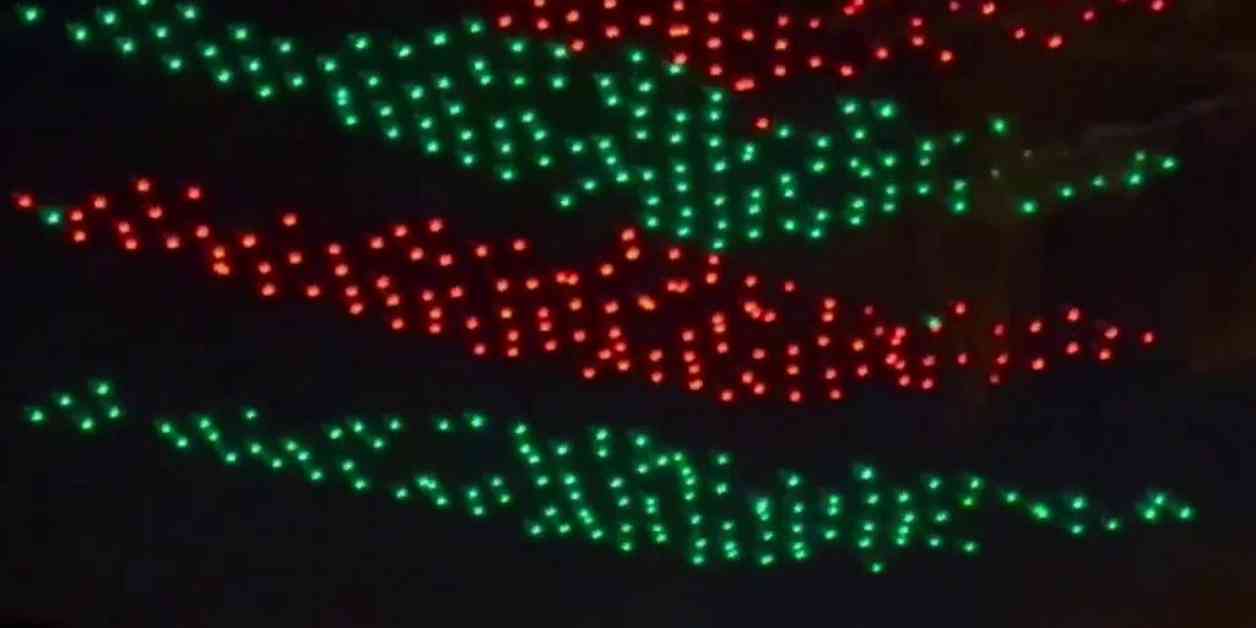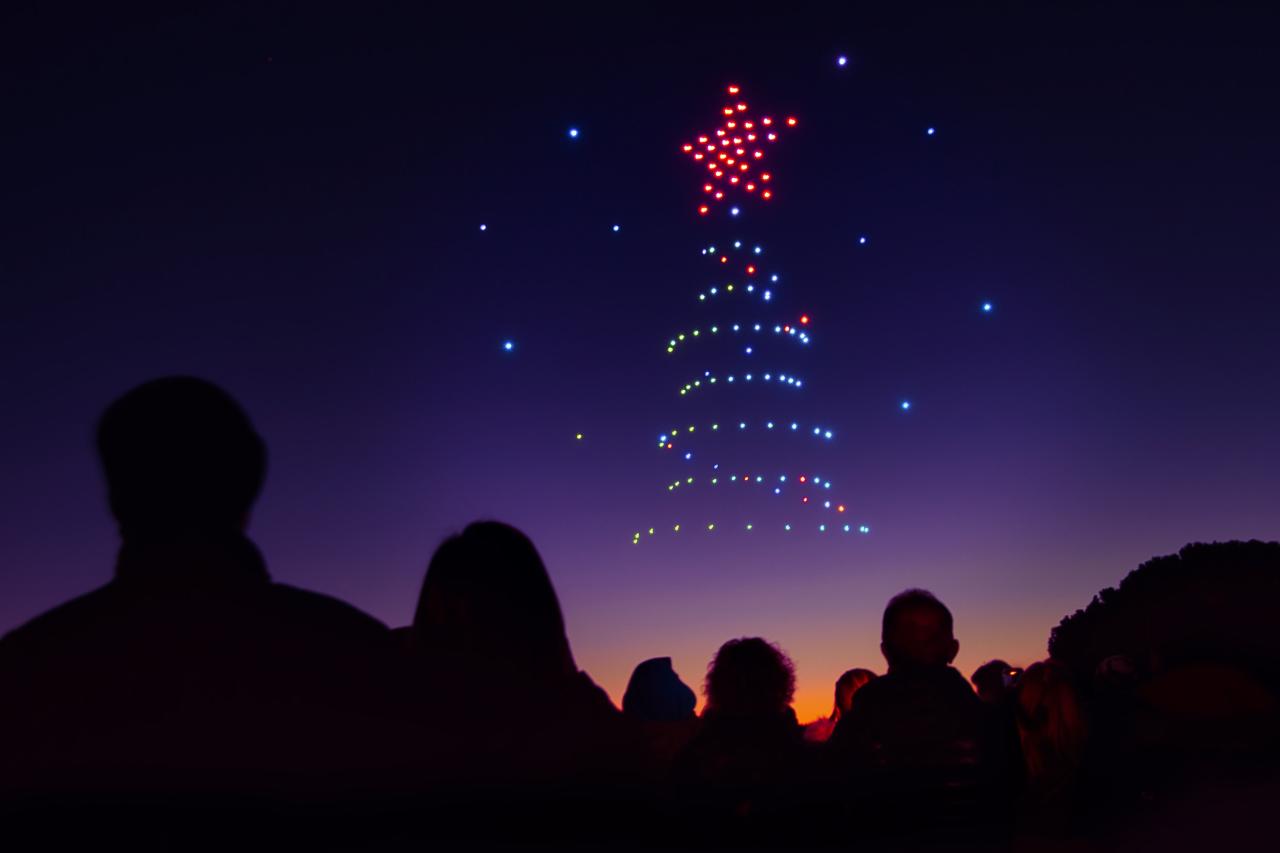Drone show accidents, while relatively rare, highlight the inherent risks associated with this increasingly popular form of entertainment. From spectacular malfunctions to near misses, these incidents underscore the critical need for robust safety protocols, advanced technology, and meticulous planning. This analysis delves into the various facets of drone show accidents, exploring their causes, consequences, and potential mitigation strategies, ultimately aiming to enhance the safety and reliability of future drone displays.
Recent drone show accidents highlight the inherent risks associated with unmanned aerial vehicles. The increasing sophistication of drone technology is evident in events like the recent ukraine drone attack on russia , which underscores the potential for both spectacular displays and devastating consequences. Understanding these risks is crucial for ensuring the safe and responsible use of drones in all contexts, from entertainment to military operations.
This exploration covers a range of topics, from the different types of accidents and their contributing factors to the crucial role of safety regulations and technological advancements. We examine the human element, including pilot error and inadequate planning, alongside technical failures and environmental influences. Furthermore, we discuss effective accident response strategies, investigation methodologies, and public risk communication techniques to promote a safer future for the drone show industry.
Drone Show Accidents: A Comprehensive Analysis
Drone shows, while captivating spectacles of light and technology, carry inherent risks. Accidents, though infrequent, can have significant consequences, ranging from minor damage to substantial financial losses and even potential harm to spectators. Understanding the types of accidents, their causes, and effective mitigation strategies is crucial for ensuring the safe and responsible operation of drone shows.
Types of Drone Show Accidents
Drone show accidents can be broadly categorized into malfunctions, collisions, and uncontrolled flights. Each type presents unique challenges and requires specific preventative measures.
| Type of Accident | Description | Contributing Factors | Prevention Strategies |
|---|---|---|---|
| Malfunctions | Unexpected failure of drone components, including motors, batteries, GPS, or flight controllers. | Manufacturing defects, inadequate maintenance, extreme weather conditions, software glitches. | Regular maintenance checks, use of high-quality components, pre-flight inspections, redundant systems. |
| Collisions | Impact between drones or drones and other objects (e.g., buildings, trees). | Poor flight planning, inadequate spacing between drones, strong winds, pilot error. | Precise flight planning software, appropriate safety distances, real-time monitoring, obstacle avoidance systems. |
| Uncontrolled Flight | Loss of control over a drone, resulting in erratic flight patterns or crashes. | GPS signal loss, radio interference, software glitches, pilot error, extreme weather. | Redundant GPS systems, robust radio communication, well-trained pilots, emergency landing procedures. |
Drone malfunctions can stem from various sources. For instance, motor failure can be caused by overheating due to prolonged operation or a manufacturing defect. Battery failure might result from age, damage, or improper charging. GPS signal loss can lead to uncontrolled flight, especially in areas with limited satellite coverage or significant radio interference. The effects of these malfunctions can range from a single drone crashing to a cascade of failures affecting multiple drones in a coordinated show.
Based on anecdotal evidence and reports from industry professionals, collisions appear to be relatively more frequent than catastrophic malfunctions, while uncontrolled flights, often triggered by a combination of factors, represent a significant safety concern, potentially causing the most widespread damage. Precise statistical data on the frequency and severity of drone show accidents is limited due to the relatively nascent nature of the industry and variations in reporting practices.
Causes of Drone Show Accidents

Several factors contribute to drone show accidents, often interacting in complex ways. Understanding these causes is crucial for developing effective safety protocols.
Human error plays a significant role, encompassing aspects like pilot skill, inadequate planning, and insufficient risk assessment. Technical failures, such as software glitches, hardware malfunctions, and communication disruptions, also contribute significantly. Environmental factors, including weather conditions (strong winds, rain, fog) and electromagnetic interference, can exacerbate existing problems or independently trigger accidents.
Recent drone show accidents highlight the need for robust safety protocols. The potential for mishaps is significant, especially considering the complexities involved; for instance, consider the advanced technology required for precise flight control, as showcased by the impressive capabilities of the cobequid pass camera system. Ultimately, preventing future drone show accidents demands continuous improvement in both technology and safety regulations.
A typical accident might unfold as follows:
Flowchart (Descriptive): A strong wind gust (environmental factor) disrupts the GPS signal of a drone (technical failure). The pilot (human error), struggling to regain control, fails to execute the emergency landing procedure properly, leading to a collision with another drone (collision). The cascading effect then triggers a chain reaction affecting nearby drones (malfunction).
Safety Protocols and Regulations, Drone show accident
A comprehensive set of safety protocols is vital for minimizing the risk of drone show accidents. These protocols should be rigorously followed by all operators and personnel involved.
- Thorough pre-flight inspections of all drones and equipment.
- Detailed flight planning with redundancy built into the system.
- Real-time monitoring of drone positions and status.
- Implementation of emergency landing procedures.
- Use of obstacle avoidance systems.
- Selection of appropriate airspace and weather conditions.
- Regular training and certification of drone pilots.
- Establishment of clear communication channels between pilots and ground crew.
Regulations governing drone shows vary across different regions. The FAA in the United States, the CAA in the United Kingdom, and the CASA in Australia, for example, have specific guidelines regarding airspace authorization, pilot certification, and operational safety procedures. The effectiveness of these regulations depends on their stringency, enforcement, and adaptation to technological advancements.
| Country | Pilot Certification | Airspace Restrictions | Emergency Procedures |
|---|---|---|---|
| United States (FAA) | Part 107 Remote Pilot Certificate | Specific airspace authorization required | Detailed emergency response plan required |
| United Kingdom (CAA) | PfCO (Permission for Commercial Operation) | Operational limitations depending on drone weight and location | Defined procedures for reporting incidents |
| Australia (CASA) | Remote Pilot Licence | Strict regulations on operating near airports and populated areas | Emphasis on risk mitigation and pre-flight planning |
Accident Response and Investigation

Effective response and investigation procedures are essential for learning from accidents and preventing future incidents. A structured approach is crucial to ensure efficient and accurate analysis.
Recent drone show accidents highlight the need for robust safety protocols. Analyzing such incidents often involves reviewing footage, and high-quality visual data is crucial; accessing resources like the cobequid pass camera feed could provide valuable comparative data on atmospheric conditions and potential visual obstructions, aiding in accident investigations and improving future drone show safety measures. Ultimately, understanding these factors is key to preventing similar occurrences.
Responding to a drone show accident involves immediately securing the accident site, ensuring the safety of personnel and bystanders, and initiating communication with relevant authorities. Investigation methods involve data analysis from flight logs, drone telemetry, and witness testimonies. A step-by-step guide would include: securing the site, documenting the scene with photographs and videos, collecting damaged drones and components, interviewing witnesses, and analyzing flight data.
Hypothetical Accident Scenario: During a drone show, a sudden power surge causes multiple drones to malfunction, resulting in several crashes. The investigation would involve analyzing the power supply, examining the drones for defects, reviewing flight logs for anomalies, and interviewing the show’s technical crew and witnesses.
Technological Advancements and Safety
Technological advancements are playing a crucial role in enhancing the safety of drone shows. GPS systems provide precise location data, while obstacle avoidance systems help prevent collisions. Redundant systems ensure that if one component fails, others can take over, minimizing the risk of uncontrolled flight.
Advancements in battery technology are leading to longer flight times and improved reliability. More sophisticated flight controllers enable smoother and more precise maneuvers. Improved communication protocols reduce the likelihood of signal interference.
Drone with Advanced Safety Features (Descriptive): Imagine a drone equipped with multiple GPS receivers for redundancy, a sophisticated obstacle avoidance system using lidar and cameras, a fail-safe parachute system for emergency landings, and a real-time health monitoring system that alerts the pilot to potential malfunctions. Each feature works independently and in coordination to minimize risk.
Public Perception and Risk Management

Public perception significantly influences the acceptance and growth of the drone show industry. Negative incidents can erode public trust, while successful risk management strategies can build confidence.
Risk communication strategies should focus on transparency, providing clear information about safety measures, and addressing public concerns. Successful campaigns might involve demonstrating the safety protocols used, showcasing the rigorous training of pilots, and highlighting the technological advancements that minimize risks. Regular communication with local authorities and communities can help build trust and support.
In conclusion, the safety and success of drone shows hinge on a multifaceted approach encompassing stringent safety protocols, advanced technological integration, comprehensive risk management, and effective public communication. By understanding the causes of accidents, implementing preventative measures, and continuously improving safety standards, the drone show industry can strive towards a future where spectacular displays are enjoyed without compromising safety. Continuous innovation and a commitment to rigorous safety practices are paramount to maintaining public trust and ensuring the continued growth of this captivating form of entertainment.
FAQ Summary
What is the average cost of a drone show accident?
The cost varies greatly depending on the scale of the accident, including damage to drones, property, and potential injury claims. It can range from a few thousand dollars to significantly more in severe cases.
Who is legally responsible in case of a drone show accident?
Legal responsibility depends on the cause of the accident. It could be the drone operator, the show organizer, the drone manufacturer, or a combination thereof, determined through investigation and legal proceedings.
Are there insurance options specifically for drone show operators?
Yes, many insurance providers offer specialized liability insurance for drone operators and companies involved in drone shows, covering potential damages and liabilities.
How are drone show accidents investigated?
Investigations typically involve examining flight data, witness testimonies, drone wreckage analysis, and reviewing relevant safety protocols and regulations to determine the root cause of the accident.
